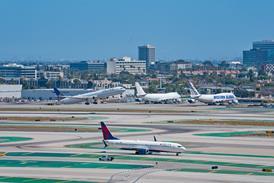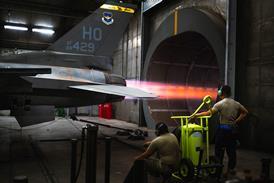Guy Norris/LOS ANGELES
The Boeing-led Airborne Laser (ABL) team is using more than a third of its $98 million extra funding to combat a host of technical issues to keep the YAL-1A prototype on course for a live-fire demonstration target of 2003.
The three major contractors, Boeing, Lockheed Martin and TRW, are each adding $20 million to the USAir Force's $38 million. Although the team is likely to be reimbursed in 2002, $34 million is needed now to cover specific problems with the modified 747-400 airframe's structure; turbopumps in the TRW high-energy chemical oxygen iodine laser (COIL); and the mounting of the conformal window in the nose-mounted laser turret.
"We are committed to the 2003 missile shoot-down target, and to do that we've looked forward and can see the things we have to do," says Boeing ABL vice president, Stephen Sauve.
Modifications include strengthening the Station 1000 bulkhead (that doubles as an airlock) which divides the crew section from the laser area at the rear of the aircraft. Additional strengthening of the bulkhead supporting the nose turret has also been designed.
TRW is testing a new COIL-turbopump impeller. Tests on an earlier version revealed problems with cavitation which would have caused serious fluctuations in the laser's output. The COIL is designed to down ballistic missiles in a 20s period during boost phase.
Boeing has meanwhile started fit checks of a titanium belly skin below the laser modules to provide the additional strength required for the modified section. The design contains six large exhausts for each of the laser modules. The converted YAL-1A is due to make its first flight in February 2002, from Wichita to Edwards AFB, California, for complete fitting out and testing in May 2002.
The full-up laser system will be installed by May 2003 for the start of critical test firings against live missiles. Beam control and laser tests are scheduled to begin in December, against a variety of aircraft-towed targets, missiles dropped from high altitude, hot air balloons and ground-launched missiles. The USAF plans to declare residual operational capability for the YAL-1A by the third quarter of 2003, initial operational capability in 2007 and full operational capability in 2009.
Source: Flight International




















